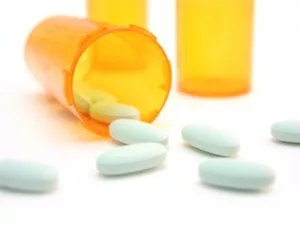Widespread drug use across the country is a serious issue and calls for substance abuse treatment, and CT is no different. The Connecticut Drug Control Update from the Office of National Drug Control Policy Program (ONDCP) reports the following teen drug use fact:
Connecticut is among the top 10 states in the country when it comes to addiction to illicit drugs among those between the ages of 18 and 25.
Overall, about 8 percent of Connecticut’s residents report that they regularly use illicit substances. This in turn affects youth mental health as a whole and requires treatment for substance abuse in Connecticut.
It’s a problem that has serious consequences. The ONDCP also reports that 444 Connecticut residents died as a direct result of using drugs in 2007. This number is higher than the number of people who died due to firearm-related events or car accidents.
Families with a teenager who is struggling with substance abuse in Connecticut find these statistics more sobering than most. Research has shown that the earlier a teenager begins experimenting with illicit substances, the more likely it is that they will develop an addiction.
Additionally, they take on risks in their daily lives that include:
- Falling behind academically
- Expulsion from school
- Loss of positive friendships
- Acute and chronic health ailments
- Exacerbation of underlying medical or psychological issues
- Problems relating with people at home and in the community
These issues can be addressed when your teen undergoes a comprehensive substance abuse treatment program. These programs would be available at a teen treatment center-cum-Connecticut mental school that addresses both substance abuse and mental health.
Commonly Substance Abuse in Connecticut
The most commonly abused drug in Connecticut is heroin, according to the Substance Abuse and Mental Health Services Administration (SAMHSA). They report that heroin was most commonly used by patients who entered substance abuse treatment in CT.
Next in line were, in order of preference:
- Marijuana
- Cocaine
- Other opiates (e.g., painkillers like OxyContin, hydrocodone, etc.)
- Tranquilizers
- PCP
- Hallucinogens
- Stimulants
- Sedatives
- Inhalants
The most commonly abused drugs among teens? Alcohol and marijuana. But over the past few years, use of prescription drugs–both stimulant and opiate painkillers–has started to increase as well as the abuse of inhalants. Also, the use of technically “legal” synthetic substances like spice and K2 and over-the-counter medications like cough syrups has gone up.
The Range of Substances

Many parents believe that alcohol and marijuana are the biggest threats to their teen. While these substances should be avoided, there are other issues that can be just as dangerous to kids today. Here are a just a few signs of the changing times when it comes to teen drug use and abuse:
- Marijuana today is far more potent than it was 20 years ago.
- New drugs are being created every day. The European Monitoring Centre for Drugs and Drug Addiction (EMCDDA) uncovers up to 50 or more new synthetic versions of substances on the street every year. Because these drugs are new, they are not yet regulated. As a result, many teens falsely believe that their “legal” status means that they are safe.
- Over-the-counter medications when taken in large doses can be hallucinogenic and cause a “high.” Teens can purchase them with almost no restrictions and use them for recreational purposes.
- ADHD medications are commonly prescribed among children and teens due to the ever-increasing number of ADHD diagnoses in the US. Those who take these medications – Adderall, Vyvanse, Ritalin, and others – but are not diagnosed with the disorder can experience a stimulant high. Teens often take these drugs in an attempt to stay awake and increase focus to perform better academically.
- Prescription painkillers left over from a family member’s acute injury or surgery (e.g., hydrocodone, Vicodin, and others) are also abused. Although increased regulations have been implemented across Connecticut to decrease prescription drug abuse among teens, they have not been effective. Many opiate-addicted teens in need of a fix, and as a result, eventually turn to heroin.
Teen Drug Abuse Statistics in Connecticut
The US Department of Health and Human Services Office of Adolescent Health reports that the use of alcohol is still one of the largest problems. In a survey conducted in 2012, they found the following among high school teens in Connecticut.
- About 16 percent of kids reported drinking alcohol before the age of 13.
- Approximately 42 percent of Connecticut teens said they had at least one drink in the 30 days prior to the study.
- About 22 percent of the teen respondents reported drinking five or more alcoholic beverages within a few hours within the past 30 days.
- Among those students who reported drinking, 7 percent said they operated a vehicle while under the influence at least once in the past 30 days. Another 25 percent reported riding in a car operated by someone who had been drinking in that same time period.
Research has shown that the younger a child is when he first begins experimenting, with alcohol, the more likely it is that they will develop an addiction and youth mental health problems. It’s not an issue that should be ignored or written off as a “normal” part of growing up. Fortunately, there are options for alcohol rehab in CT. Parents are urged to take immediate action in the form of substance abuse treatment in CT if they believe their child is drinking in any amount.
Teen Drug Use Facts in Connecticut – Prescription Drugs
Additionally, the issue of prescription drug abuse and dependence among teens has become an increasingly larger problem over the past decade also affecting CT mental health. The Connecticut Department of Consumer Protection Prescription Monitoring Program found the following teen drug use facts and statistics.
- One in five teenagers has abused a prescription painkiller.
- Two out of five teens say that abusing a prescription drug is far safer than using a street drug because it comes from a doctor.
- About 30 percent of teens say they believe that painkillers are not addictive.
Also, they report that it is exceedingly common for teens to mix prescription drugs with other substance like alcohol. This results in a notoriously potent combination that can lead to overdose. They also may take pills they find in their family medicine cabinet in larger-than-recommended doses.
Connecticut Drug Overdose Issues
The result has been an increased awareness of the problem among parents and in the community at large. Ultimately, drug “take back” days have been implemented across the state in an effort to provide a safe, no-questions-asked location for families to get rid of unwanted or unneeded prescription painkillers, thus decreasing the supply available to teens in the hopes to improve CT mental health. Unfortunately, many teens in the state have already developed an opiate dependence and, in order to maintain their addiction and avoid the painful withdrawal symptoms that occur when an addicted person is without their drug of choice, they often turn to heroin.
Why?
- Heroin is similar in effect to painkillers. Both drugs are opioids and work similarly in the body providing a similar high.
- Heroin is cheaper. A day’s supply of painkillers can buy three or four days’ worth of heroin.
- Heroin is easier to get. Though illegal, it is far more accessible than heavily regulated pain pills that very few teens have a legitimate personal prescription for.
Heroin is just as dangerous as prescription painkillers and can as easily lead to overdose or accident while under the influence.
CT Mental Health is at Jeopardy
In general, any sign of drug or alcohol use of any kind is a red flag signifying a situation that requires your immediate attention. But if you’ve missed the initial uses of drugs or alcohol in your teen, you may notice some or all of the following changes if substance abuse has become a chronic issue:
- Excessive periods of sleep
- Extreme mood swings, from very chatty and personable to morose and hostile
- Wearing long shirts even in hot weather to cover up track marks or injection sites
- Exceedingly private about possessions (e.g., backpack, car, etc.)
- Paraphernalia of any kind, including cut-off straws, small plastic baggies, etc.
- Sudden, unexplained weight loss or gain
- Slurred speech, slow movements, lack of coordination, changes in pupil size, confusion, etc.
Take Action Now – Teen Substance Abuse Treatment in CT
The earlier you intervene and help your teen to stop using drugs and alcohol of all kinds, the more likely it is that he or she will be able to make long-term, positive changes. If you believe that your child would benefit from teen-specific treatment, contact a treatment program today to find out more about ways you can help your teen and your family.






